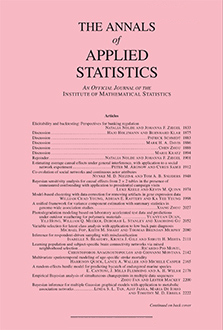Abstract
This study presents a Bayesian parametric model for the purpose of estimating the extreme load on a wind turbine. The extreme load is the highest stress level imposed on a turbine structure that the turbine would experience during its service lifetime. A wind turbine should be designed to resist such a high load to avoid catastrophic structural failures. To assess the extreme load, turbine structural responses are evaluated by conducting field measurement campaigns or performing aeroelastic simulation studies. In general, data obtained in either case are not sufficient to represent various loading responses under all possible weather conditions. An appropriate extrapolation is necessary to characterize the structural loads in a turbine’s service life. This study devises a Bayesian spline method for this extrapolation purpose, using load data collected in a period much shorter than a turbine’s service life. The spline method is applied to three sets of turbine’s load response data to estimate the corresponding extreme loads at the roots of the turbine blades. Compared to the current industry practice, the spline method appears to provide better extreme load assessment.
Citation
Giwhyun Lee. Eunshin Byon. Lewis Ntaimo. Yu Ding. "Bayesian spline method for assessing extreme loads on wind turbines." Ann. Appl. Stat. 7 (4) 2034 - 2061, December 2013. https://doi.org/10.1214/13-AOAS670
Information





